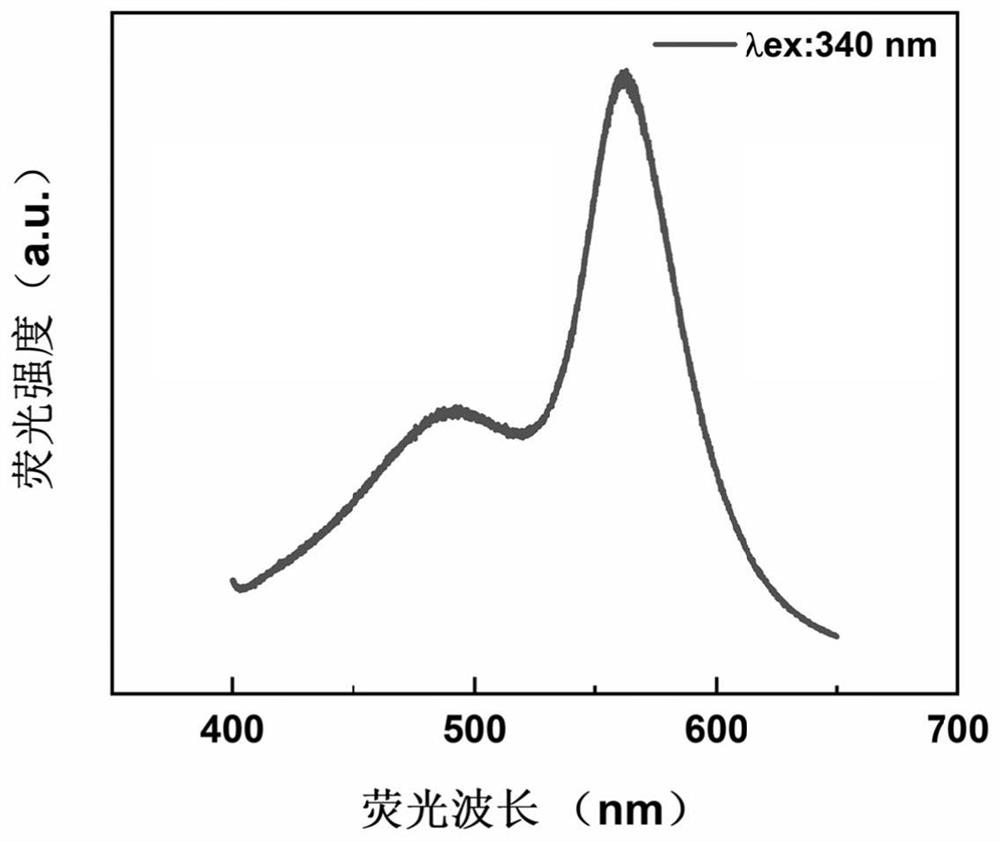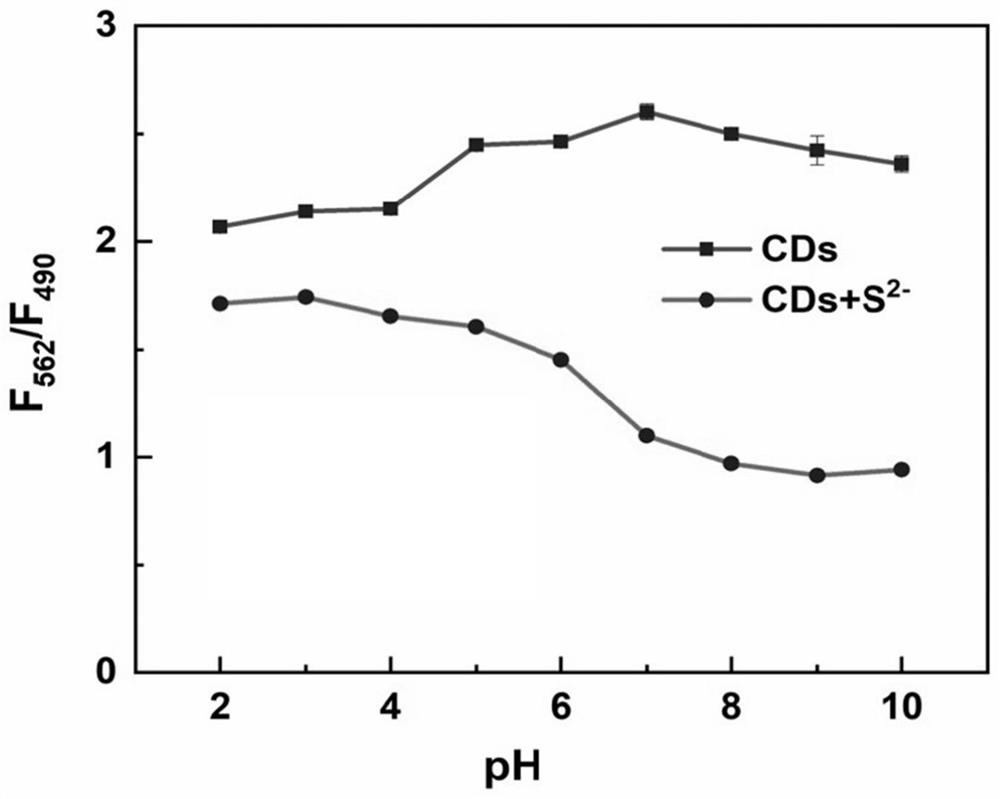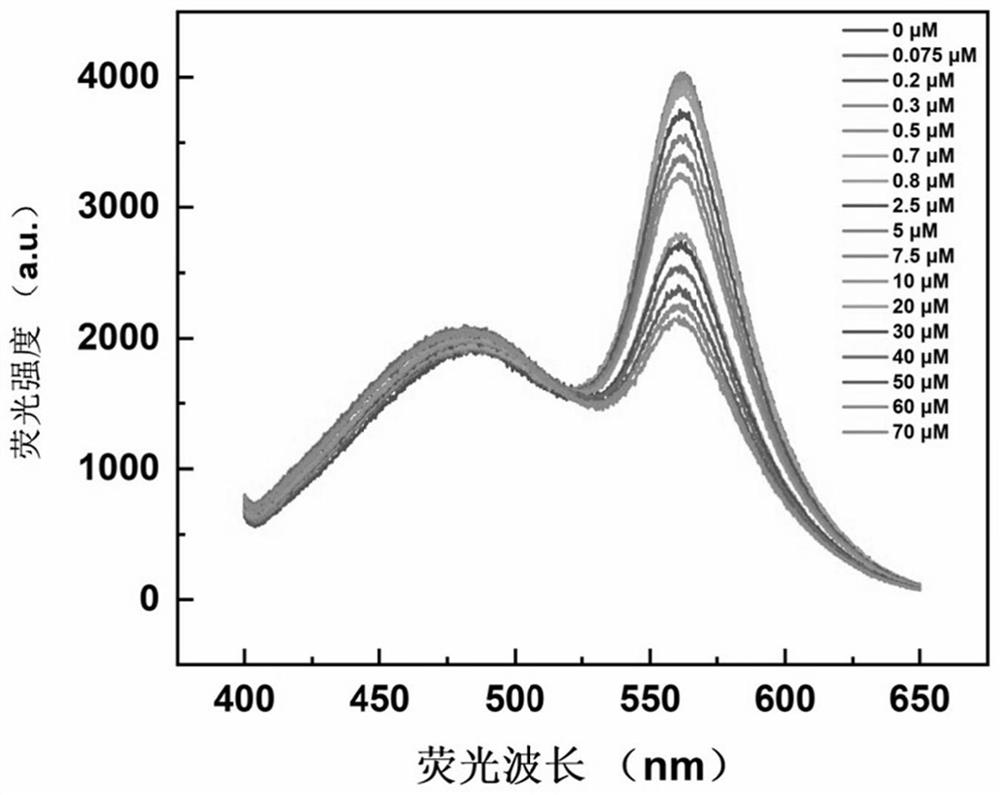Fluorescence detection method of sulfur ions and application thereof
A technology for fluorescence detection and sulfide ions, which is applied in fluorescence/phosphorescence, measurement devices, preparation of test samples, etc., can solve the problems of poor water solubility of organic fluorescent probes, poor resistance to photobleaching, and influence on signal-to-noise ratio. Low cost, wide applicability and simple operation
- Summary
- Abstract
- Description
- Claims
- Application Information
AI Technical Summary
Problems solved by technology
Method used
Image
Examples
Embodiment 1
[0035] In this embodiment, the excitation wavelength selection of the detection system is optimized, and the specific process is as follows:
[0036] Add 100 μL of carbon quantum dot nanomaterial solution (100 μg / mL) into a buffer solution (10 mM) with a pH of 7.4, the total volume of the solution is 1 mL, and mix well. The excitation wavelength is set to 340nm, and the fluorescence intensity of the measurement system at 490nm and 562nm is obtained, and the optimal excitation and emission wavelengths of the carbon quantum dot nanomaterial are obtained. The results are as follows figure 1 .
[0037] from figure 1 It can be seen that carbon quantum dots are a ratiometric fluorescent probe, and when the excitation wavelength is set to 340nm, there are relatively obvious absorption peaks at 490nm and 562nm.
Embodiment 2
[0039] In this implementation, the pH value of the detection system is optimized, and the specific process is as follows:
[0040] Add 100 μL of carbon quantum dot nanomaterial solution (100 μg / mL) to a buffer solution (10 mM) containing 70 μM sulfur ions at different pH values (2-10), the total volume of the solution is 1 mL, and mix well. The excitation wavelength is set to 340nm, and the fluorescence intensity of the system is measured at 490nm and 562nm, the results are as follows figure 2 .
[0041] from figure 2It can be seen that in this system, when the pH is 4-10, the ratio of fluorescence intensity at 562nm / 490nm is obvious, which can effectively reflect the content of sulfur ions in the system; if the pH is too low, the ratio of fluorescence intensity at 562nm / 490nm does not change significantly , resulting in insufficient sensitivity of the detection results; too high a pH does not conform to the real sample detection environment, and has no practical detecti...
Embodiment 3
[0043] The present embodiment has drawn the standard working curve in the detection method, and concrete process is:
[0044] Take 800 μL of sulfur ion solutions with different concentrations (0-70 μM) and mix them with 100 μL carbon quantum dot nanomaterial solution (100 μg / mL) and 100 μL buffer solution (pH7.4, 10 mM); the excitation wavelength is set to 340 nm, and the system is There is an emission peak at 490nm and 562nm, measure the fluorescence intensity of the system at 490nm and 562nm, such as image 3 shown. F in different concentrations of sulfide ion solution 562nm / F 490nm Fluorescence intensity ratio, with the concentration as the abscissa, F 562nm / F 490nm Fluorescence intensity ratio is the ordinate to obtain the standard working curve of sulfide ion detection, the result is as follows Figure 4 shown.
[0045] from image 3 It can be seen that when the concentration of sulfide ion solution is 0-70 μM, the fluorescence intensity at 490nm remains basicall...
PUM
 Login to View More
Login to View More Abstract
Description
Claims
Application Information
 Login to View More
Login to View More - R&D
- Intellectual Property
- Life Sciences
- Materials
- Tech Scout
- Unparalleled Data Quality
- Higher Quality Content
- 60% Fewer Hallucinations
Browse by: Latest US Patents, China's latest patents, Technical Efficacy Thesaurus, Application Domain, Technology Topic, Popular Technical Reports.
© 2025 PatSnap. All rights reserved.Legal|Privacy policy|Modern Slavery Act Transparency Statement|Sitemap|About US| Contact US: help@patsnap.com



